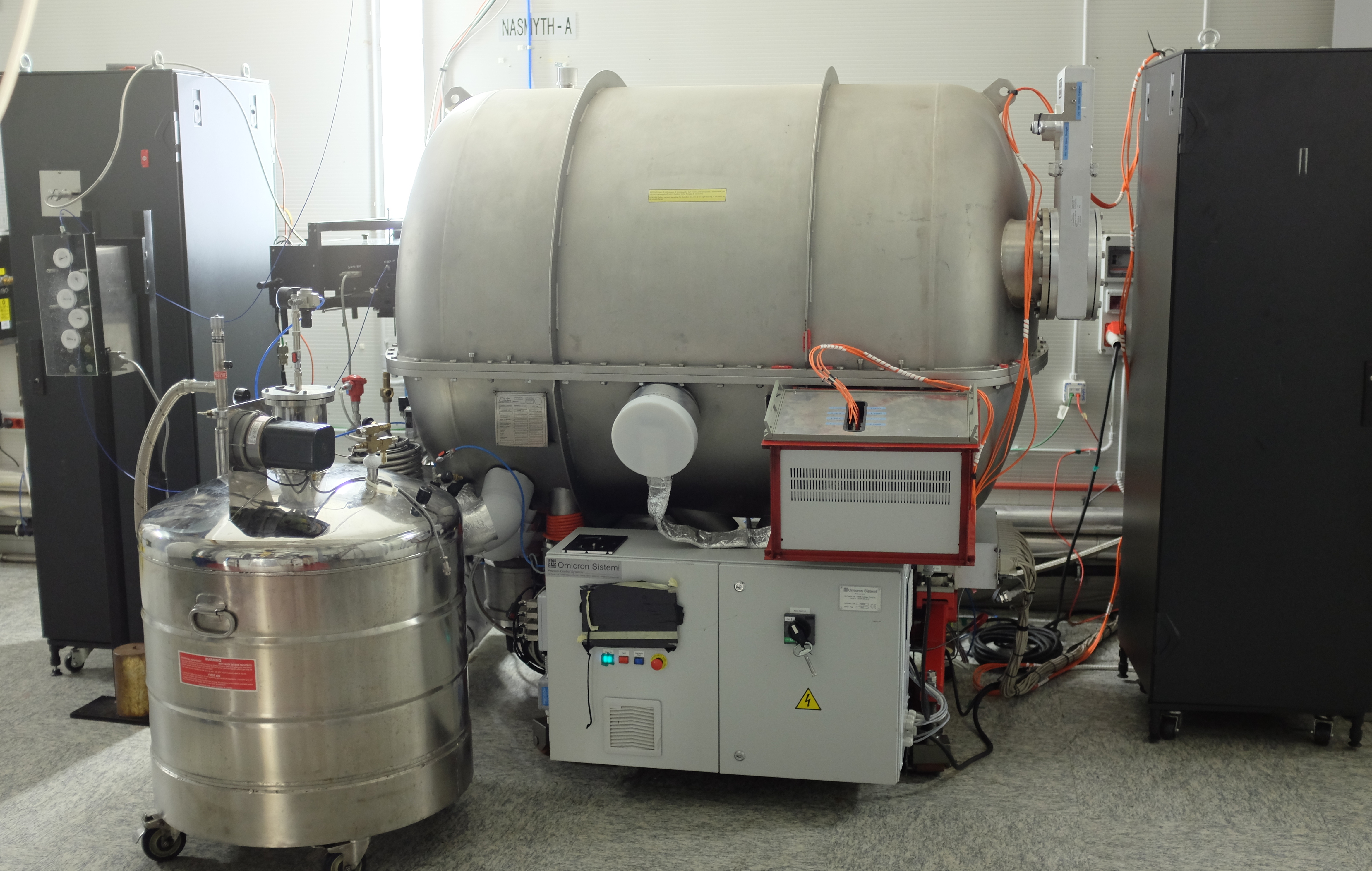Telescope & Instruments

The Near Infrared High Resolution Spectrograph
Overview
GIANO
is a near IR high resolution spectrograph mounted at the Nasmyth A focus of the TNG in July 2012. In October 2013 the Commissioning has been completed and in September 2014 the Science Verification has been successfully carried out.
The instrument provides
cross dispersed echelle spectroscopy at a resolution of 50,000 over the
0.95-2.45 micron spectral range in a single exposure.
It is fiber-fed with two fibers of 1 arcsec angular diameter at a fixed
angular distance of 3 arcsec on sky.
GIANO has only one observing mode (R~50,000) and it
can acquire spectra either of astrophysical
objects and sky simultaneously, or of calibration lamps (halogen for flat-field and U-Ne for
wavelength calibration) and dark frames.

Figure 1. Picture of Giano dewar in the TNG Nasmyth A.
| Detector | HAWAII-2 2048x2048 |
| Pixel size | 18 microns |
| Gain | 2.2 e-/ADU |
| Readout Noise | 5 e- |
| Dark Current | 0.05e-/s/pixel |
| Spatial resolution | 0.25 arsec/pixel |
| Wavelength Coverage | 0.95 - 2.45 microns |
| Spectral resolution | 50000 |
| Fiber Size | 85 microns - 1.0 arsec on the sky |
| Slicer | 2x |
Performance
First estimates of the overall GIANO performance as measured during the Commissioning and Science Verification runs.| Wavelength calibration accuracy with U-Ne lamp | 300 m/s (r.m.s) |
| Radial velocity accuracy with telluric lines | 7 m/s (r.m.s) |
| Maximum S/N on flat field (about photon-noise limited) | ~1000 (Y, J), ~300 (H, K) |
| Maximum S/N on stars (limited by fiber modal noise*) | ~70 (Y, J), ~50 (H, K) |
| Zero point in J-band (Vega mag for 1 ADU/s) | 10.1 |
| Zero point in H-band (Vega mag for 1 ADU/s) | 10.3 |
| Zero point in K-band (Vega mag for 1 ADU/s) | 10.2 |
| Limiting magnitude z-band (Vega mag) of the guiding camera | 15 |
* Fibers suffers of modal noise, whose amplitude increases with increasing wavelength. The maximum signal-to-noise achievable in the K-band is about 20 (without fiber-agitator) and 50 (with fiber-agitator). The maximum signal-to-noise is slightly higher at shorter wavelengths.
For more detailed information and clarification about the sensitivity and the spectral accuracy see the Cookbook for 2015A proposers
Recommended on-source integration times to reach S/N~50 per spectral pixel (about modal noise limited) for stars of different magnitudes, seeing < 1, are listed in Table 3.
| 10 9 |
3600 sec |
| 8 | 2400 sec |
| 7 | 1800 sec |
| 6 | 1200 sec |
| 5 4 3 |
600 sec |
| 2 1 0 |
200 sec | Vega mag. | On source Integration Times (seeing < 1arsec) |
More detailed information and more explanation about procedure and method of observation are in Cookbook for 2015A proposers
Manuals
- Graphical User Interface
- Cookbook for 2015A proposers
- Cookbook for 2015A astronomers
- Astronomical observations handbook
A complete list of technical and scientific documents can be found at the Giano webpage (Bologna)
For any comments please contact Francesca Ghinassi.

